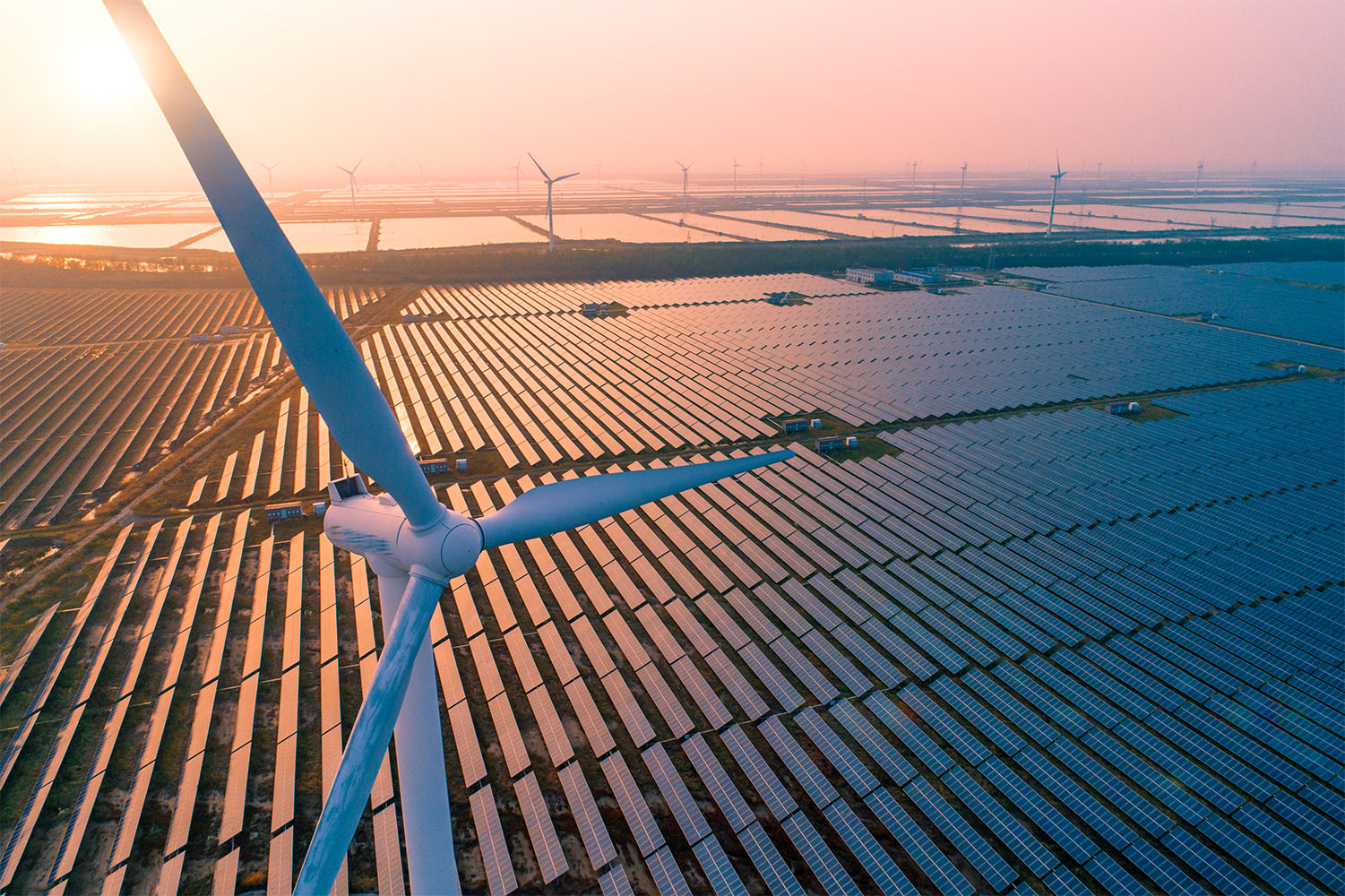The Energy Transition | Ofgem fast-tracks code modifications to speed up connections queue reforms
Published on 13th May 2024
Welcome to our top picks of the latest energy regulatory and market developments in the UK's transition to net zero.

This week we look at: the fast-track of Ofgem code modification decisions to speed up connections queue reform; the DESNZ call for evidence to drive forward carbon capture; government investment in next generation nuclear fuel, and more.
Ofgem fast-tracks four code modifications to speed up connections queue reforms
Ofgem has agreed to fast-track its decision-making process in relation to four modifications to the Connections and Use of System Code (CUSC) needed to roll out the proposed reforms. This comes amid warnings from the Electricity System Operator (ESO) that the grid connections queue could exceed 1,000GW if the most recent TMO4+ proposals are not treated with urgency.
Under the proposed TMO4+ reform – covered in a recent Insight – the ESO's previously proposed "First Ready, First Connected" approach, which aims to prioritise viable projects that are ready to connect to the grid, will apply not only to new projects applying for network connections but also retrospectively to projects already in the connections queue.
To bolster its efforts for TMO4+ to be rolled out early next year, the ESO wrote to Ofgem calling for its CUSC modification proposals (CMP434, CMP435, CM095 and CM096), which it describes as necessary regulatory changes to enable implementation of TM04+, to be fast-tracked. Ofgem has confirmed they will now be progressed on an urgent basis.
Ofgem's prioritisation of the proposals states that decisions on each modification will be taken in early November, with a proposed implementation date of 1 January 2025 in line with chancellor of the exchequer, Jeremy Hunt's, Spring Budget promise of a "new stringent connections process from January 2025". The decision letter also notes that the connections queue currently sits at over 700GW across transmission and distribution networks, and warns of the "significant commercial impact on parties, consumers and other stakeholders" if the connections process continues to be unfit for purpose.
The ESO has warned that if TM04+ is not implemented in early 2025, the queue could eventually reach over 1,000GW, and has reiterated its belief that the reform could cut the queue by more than half.
DESNZ launches call for evidence to drive forward carbon capture
The government has launched a call for evidence on the ways that captured carbon from power generation and energy intensive industrial plants could be transported to long term storage facilities on top of the existing network of pipelines. This is with the aim of increasing the capacity for carbon capture, usage and storage (CCUS) projects to support the UK on the path to net zero.
The Climate Change Committee has described carbon capture technology, which "captures" CO2 before it reaches the atmosphere and stores it underground in offshore sites (thus reducing emissions), as a "necessity" for meeting net-zero targets. The government hopes that this new call for evidence will encourage the industry to adopt carbon capture technology to a greater degree, creating jobs and boosting the economy amid the transition to green business practices.
The call follows the government's commitment in the landmark Carbon Capture, Usage and Storage Vision published in December 2023, which set out the government's plans for a competitive CCUS market in the UK by 2035.
The call for evidence will run for 10 weeks, closing on 16 July. It seeks industry views on non-pipeline transport value chain data, and CCUS policy landscape and wider deployment considerations. The government hopes that responses will help to overcome the costs associated with carbon capture technologies and inform future policy development.
Crown Estate reports on UK offshore wind success in 2023
The Crown Estate has reported that offshore wind in the UK is a "success story" in its latest UK Offshore Wind Report.
The report states that the UK offshore wind market is the second largest in the world and accounts for 43% of European offshore wind capacity. In addition, a further 10GW of offshore wind was added to the pipeline and the sector produced 49TWh of electricity, enough to power half of UK homes, last year.
Further notable new records in the sector have been highlighted in the report, including that Seagreen, Scotland's largest offshore windfarm, has become fully operational. Additionally, The Crown Estate highlights that several significant milestones have been reached in 2023, including its Supply Chain Accelerator fund which launched a £10m pilot last summer to support supply chain opportunities created through the Offshore Leasing Round 5 in the Celtic Sea. As we reported previously, a potential 4.5GW will be available in Leasing Round 5, split across three project areas.
However, despite the progress that has been made in the offshore wind sector, the government estimates that 125GW of offshore wind deployment could be needed by 2050 to meet net-zero targets. The Crown Estate states that the seabed is crucial to achieving these goals, and calls for a coordinated approach to seabed management and the delivery of transmission infrastructure. Gus Jaspert, Managing Director, Marine at The Crown Estate describes 2023 as a "landmark year for the UK offshore wind sector", and that the shift in approach and attitude has created "strong foundations" for the growth of the sector in the future.
UK government announces £196m investment in next generation nuclear fuel
The government has awarded funding of £196 million for the development of a uranium enrichment facility that will power future nuclear reactors. The funding is part of a £300 million programme announced in the Civil Nuclear Roadmap, published in January 2024. The government seeks for the UK to become the first European nation to make advanced nuclear fuel for nuclear power plants.
At present, Russia is the only commercial producer of high-assay low enriched uranium (HALEU). HALEU powers most advanced modular reactors and is critical for the UK to meet its nuclear targets by 2050. We have previously reported on the government's targets for expansion of nuclear energy. Therefore, the UK needs to be self-sufficient in producing HALEU to increase national energy security. It is estimated that by 2031 Urenco's facility will produce 10 tonnes of HALEU annually.
The funding has been given to Urenco to build the facility in Capenhurst, Cheshire. The proposed facility will aim to increase energy security and affordability in the UK, with less reliance on Russian exports. The facility will also support 400 highly-skilled jobs, boosting the local supply chain and economy.
The prime minister, Rishi Sunak, has said that "the wider future of British nuclear remains a critical national endeavour- guaranteeing nuclear and energy security, and reducing energy bills for Brits".
Innovation platforms continue to launch in the distribution network space
New innovative platforms continue to be launched in the distribution network industry, notably the ENA Connect Direct platform that has been announced by the Energy Networks Association (ENA), which represents the UK's distribution and transmission licence holders.
ENA Connect Direct provides a new online application service for installers of domestic low carbon technologies. The new application service will be available for solar panel, heat pump, EV charger and battery system applications. It seeks to modernise and simplify the application process by using artificial intelligence (AI) to assess routine applications, with the capability of providing instant approvals.
The platform aims to minimise the time it takes to connect low-carbon technologies to the grid as well as transforming the electricity network into a flexible and bidirectional grid, where power can also flow into the grid from sources such as electric vehicle chargers with vehicle-to-grid capabilities. The platform will also provide Distribution Network Operators (DNOs) with accurate data and increased visibility, which will assist in efficient network design and operation.
AI is being increasingly utilised in renewable energy technologies through a mixture of government and private sector support, and government funding of £1.73 million was recently allocated across eight AI projects in the renewable energy sector.
National Grid has launched its online "clear-view-charge" platform, which provides customers with information on Distribution use of Service (DUoS) tariffs. This information will enable customers who either have assets connected to the grid, or are seeking to connect new assets, to view projections of applicable DUoS tariffs for up to seven years. Provision of such data aims to help customers understand the potential DUoS impact on their projects and therefore make informed decisions around where to locate them and how to ensure effective operation. The platform will also provide export data, which will enable customers to conduct more detailed asset modelling.
This article was written with the assistance of Khushal Thobhani, Jessica Sawford, Charlotte D'Arcy, Luke Hopper and Hannah Bradley, trainee solicitors.




